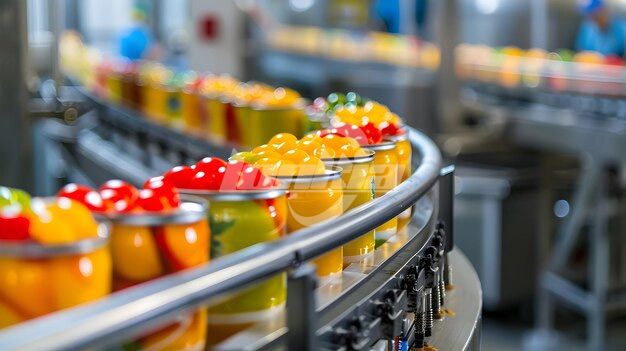Canned fruits remain a staple in global food markets thanks to their long shelf life, rich flavor, and convenience. But behind every neatly sealed can is a highly coordinated and automated process. A modern fruit canning production line handles everything from washing and sorting to filling, sealing, and sterilizing—ensuring efficiency, food safety, and consistent quality.
Let’s explore how the full line works and why it’s an essential investment for fruit processors.
1. Fruit Washing and Sorting
The process begins with thorough cleaning. Fruits are passed through bubble washing machines or rotary drum washers, which remove soil, pesticides, and surface debris. Some advanced systems use ozone or UV sterilization for added hygiene.
After washing, a visual inspection system or manual sorting belt ensures that only high-quality fruits proceed to the next stage.
✅ Key Features: bubble cleaning, circulating water filters, stainless steel construction.

2. Peeling, Pitting, and Cutting
Depending on the type of fruit—peaches, pineapples, mangos, or apples—this stage may involve:
Peeling machines (for soft fruits)
Corers and slicers (to remove pits or slice into uniform shapes)
Fruit preparation systems (to mix or pre-cook for jams or sauces)
Automation ensures precision and high-speed processing, minimizing waste and labor costs.
3. Filling and Brine/Syrup Addition
Prepared fruits are transported into automatic filling machines, where they are portioned into sterilized cans or jars. A precise volume of brine or syrup is added to preserve the fruit and improve taste and texture.
Gravity or vacuum filling systems are used depending on viscosity and target container type.
4. Sealing and Sterilization
The sealing process typically uses can seamers or vacuum capping machines for glass jars. Immediately after sealing, the cans enter a retort sterilizer or water spray autoclave to eliminate microbial risks and extend shelf life.
For high-acid fruits, hot filling and pasteurization may suffice. For low-acid products, full sterilization is essential.
🔒 Tip: Sealing and sterilization must comply with local food safety regulations (FDA, CE, HACCP, etc.).
5. Cooling, Labeling, and Packaging
After thermal processing, cans are cooled using cooling tunnels or spray chillers, labeled via automated systems, and packaged into boxes or pallets for distribution.
Some lines even integrate metal detectors or X-ray inspection before final packaging to ensure food safety.
Why Choose an Integrated Fruit Canning Line?
✅ Consistency: Uniform product quality and sealing integrity.
✅ Efficiency: High-speed continuous processing from start to finish.
✅ Labor Reduction: Automation reduces the need for manual handling.
✅ Compliance: Meets hygiene standards for export and domestic sales.
At LONKIA Machinery, we design and supply customizable fruit canning production lines tailored to your fruit type, capacity, and packaging style. Whether you produce diced pineapples or peach halves in syrup, we help you streamline your production flow from washing to sealing.
Conclusion
A fully integrated fruit canning production line transforms raw produce into shelf-stable, ready-to-market canned goods—all in a single continuous flow. Investing in such a system is not only about increasing capacity; it’s about achieving reliable, hygienic, and cost-efficient operations in a competitive food industry.
